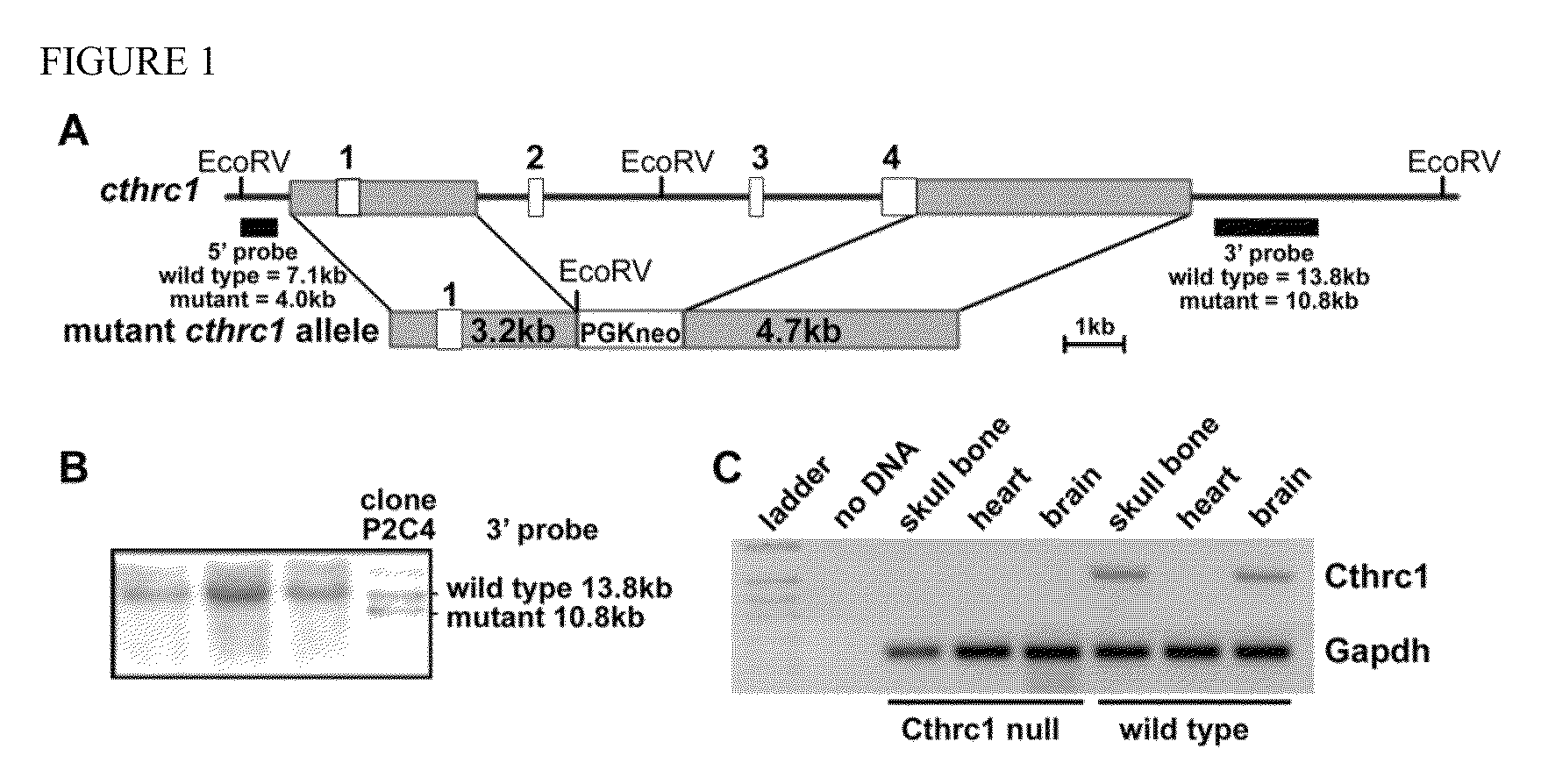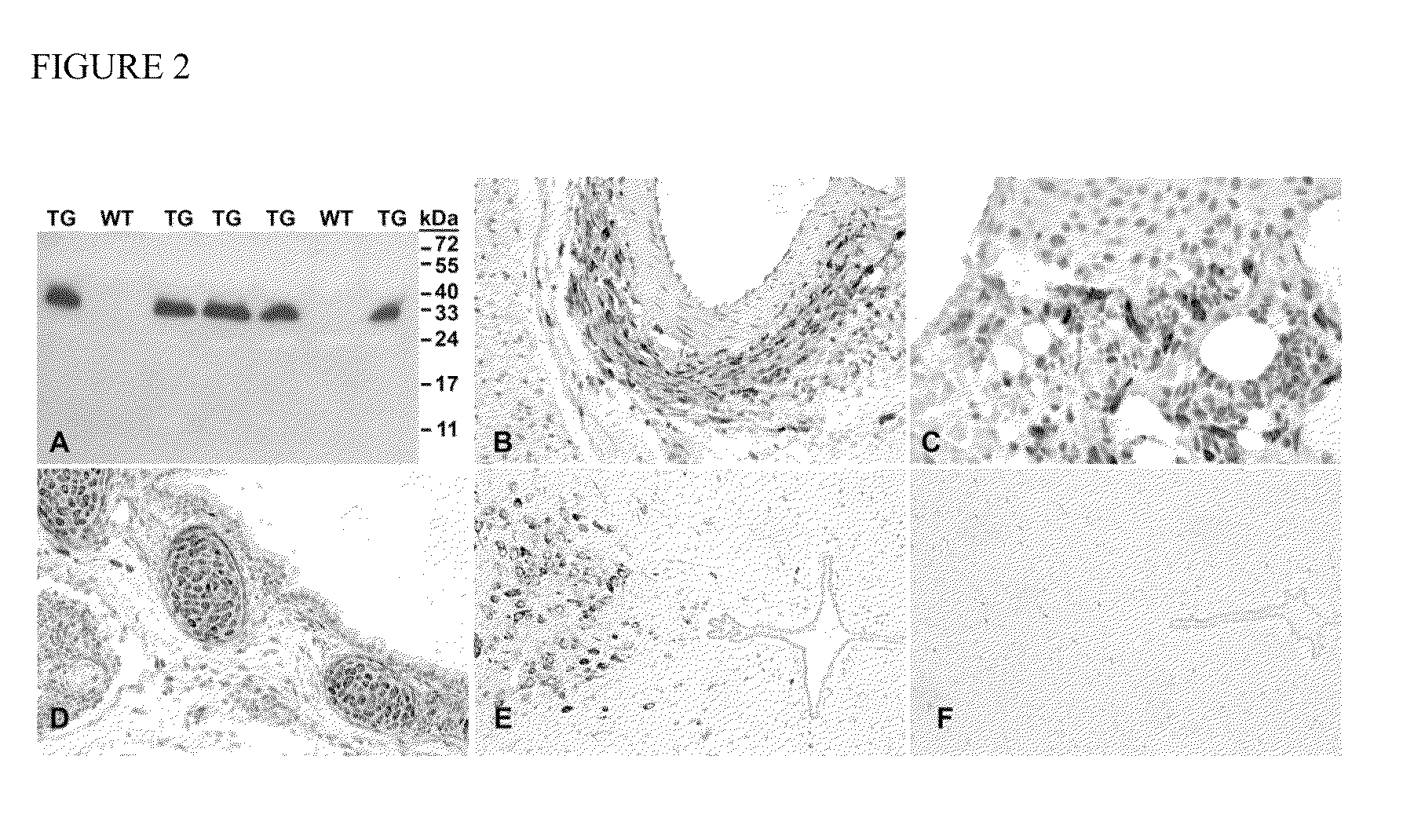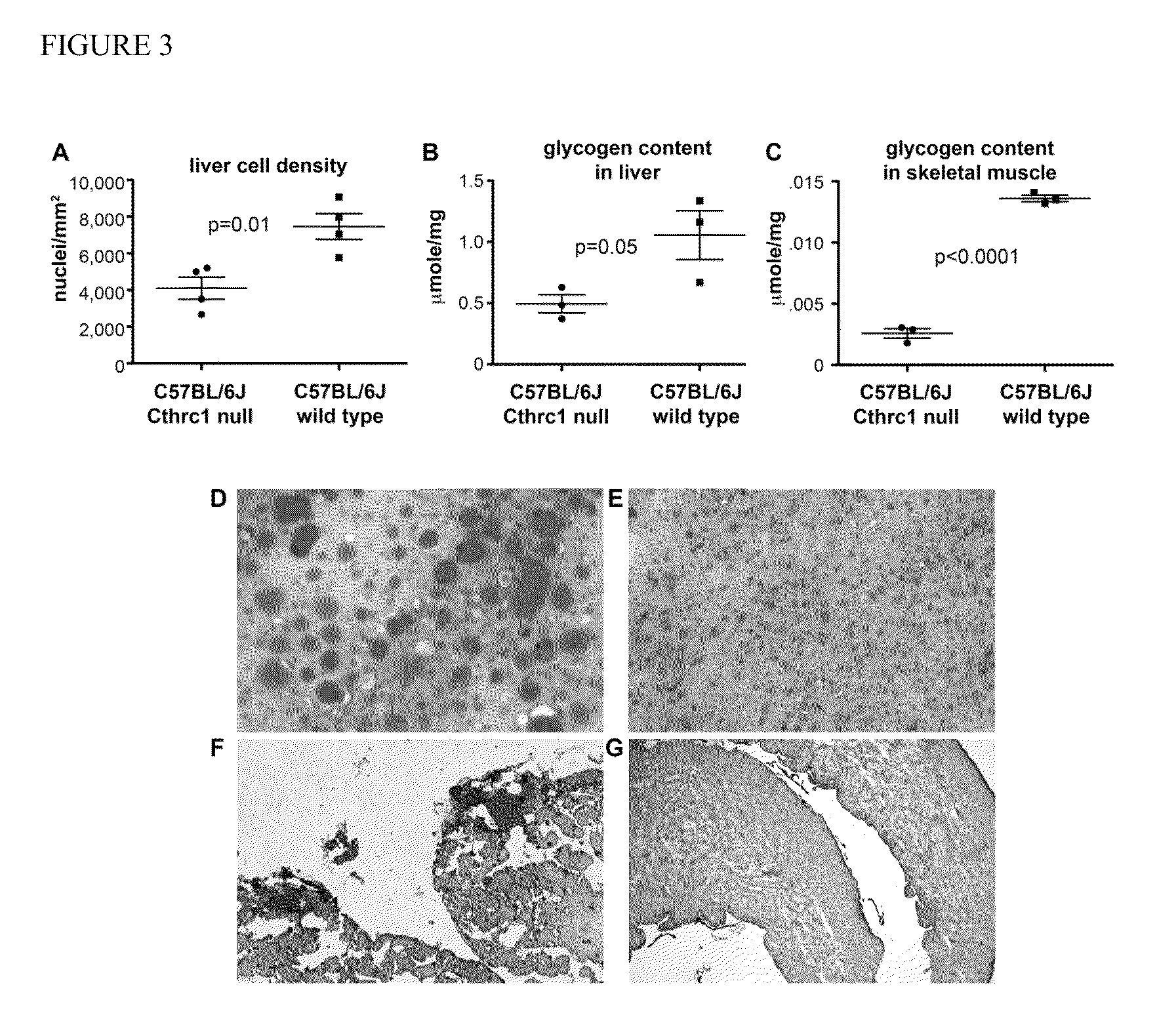Methods for treating metabolic syndrome with Cthrc1 polypeptide
a technology of cthrc1 and metabolic syndrome, which is applied in the field of metabolic syndrome treatment with cthrc1 polypeptide, to achieve the effect of reducing the probability of developing a disorder
- Summary
- Abstract
- Description
- Claims
- Application Information
AI Technical Summary
Benefits of technology
Problems solved by technology
Method used
Image
Examples
example 1
Generation of Cthrc1 Null Mice
[0118]To characterize Cthrc1 function in vivo, a novel Cthrc1 null allele was generated by replacing three of the four exons (exons 2-4) with a neomycin cassette (Cthrcr1tm1Vli) (FIG. 1A). This mutant allele resulted in a complete null with no detectable expression of Cthrc1 as determined by RT-PCR, Western blotting and immunohistochemistry (FIG. 1C, 2F). Mice carrying this allele were backcrossed more than eleven generations to obtain the mutant allele on a pure 129S6 / SvEv or C57BL6 / J genetic background, respectively. Cthrc1− / − mice were viable and revealed no obvious developmental abnormalities.
example 2
Adult Cthrc1 Null Mice have Dramatically Increased Levels of Lipid in Their Livers and Hearts
[0119]Routine histology of livers from six month old Cthrc1 null mice on the C57BL / 6J background revealed strikingly larger hepatocytes compared to wild-type controls. Overall this resulted in a significantly lower cell density (FIG. 3A). Oil red O staining was performed to determine whether lipid content was increased in livers from mutants and this revealed dramatically increased lipid storage in Cthrc1 null mice resulting in macro- and micro-vesicular steatosis (FIG. 3D, E). Lipid accumulations were also observed in hearts from Cthrc1 null mice but not wild-type controls (FIG. 3F, G). Next glycogen levels in liver samples were measured. A significant decrease in glycogen in livers was present in the mutant mice (FIG. 3B). Also, a significant decrease in glycogen content was also found in skeletal muscle from mutant mice compared to wild-type controls (FIG. 3C). The abnormalities observed ...
example 3
Cthrc1 is Expressed in the Central Nervous System and Pituitary Gland
[0120]A comprehensive immunoblot-based and immunohistochemistry-based survey of Cthrc1 expression was undertaken in tissues from adult mice, rats and pigs. Expression of Cthrc1 in two month old C57BL / 6J mice was detected in the supraoptic nucleus (SO, FIG. 4A) and paraventricular nucleus (PVH, FIG. 4B) of the hypothalamus, both of which contain neurosecretory cells with axon terminals in the posterior pituitary. Serial sectioning of the entire midbrain region, however, did not indicate that any of Cthrc1 immunoreactivity of the hypothalamus was transported to the posterior pituitary for secretion (data not shown). Cthrc1 expression was not detected anywhere in the pituitary of mice at this age nor were colloid-filled follicles found in the anterior pituitary in mice at two months of age. Similarly, neurons of the supraoptic nucleus in pigs also expressed Cthrc1 but no Cthrc1 was found in the posterior pituitary (da...
PUM
| Property | Measurement | Unit |
|---|---|---|
| temperatures | aaaaa | aaaaa |
| temperatures | aaaaa | aaaaa |
| temperatures | aaaaa | aaaaa |
Abstract
Description
Claims
Application Information
 Login to View More
Login to View More - R&D
- Intellectual Property
- Life Sciences
- Materials
- Tech Scout
- Unparalleled Data Quality
- Higher Quality Content
- 60% Fewer Hallucinations
Browse by: Latest US Patents, China's latest patents, Technical Efficacy Thesaurus, Application Domain, Technology Topic, Popular Technical Reports.
© 2025 PatSnap. All rights reserved.Legal|Privacy policy|Modern Slavery Act Transparency Statement|Sitemap|About US| Contact US: help@patsnap.com



